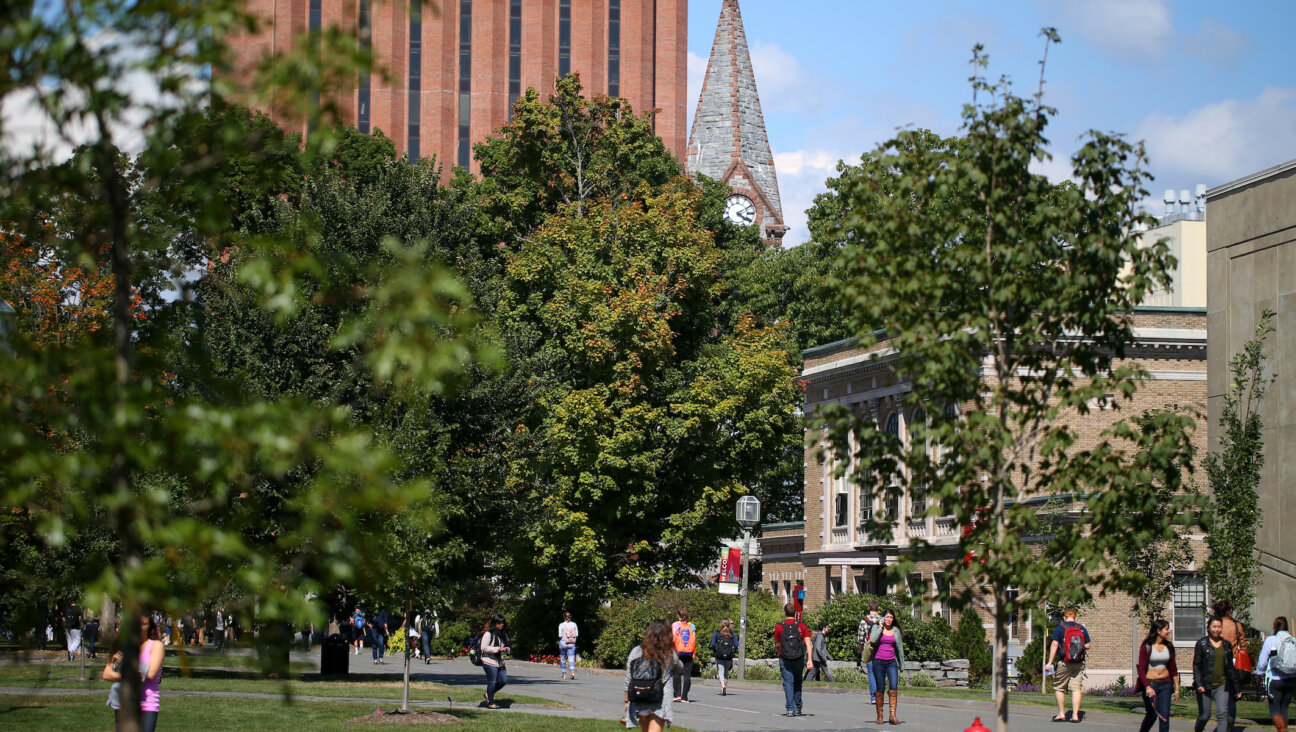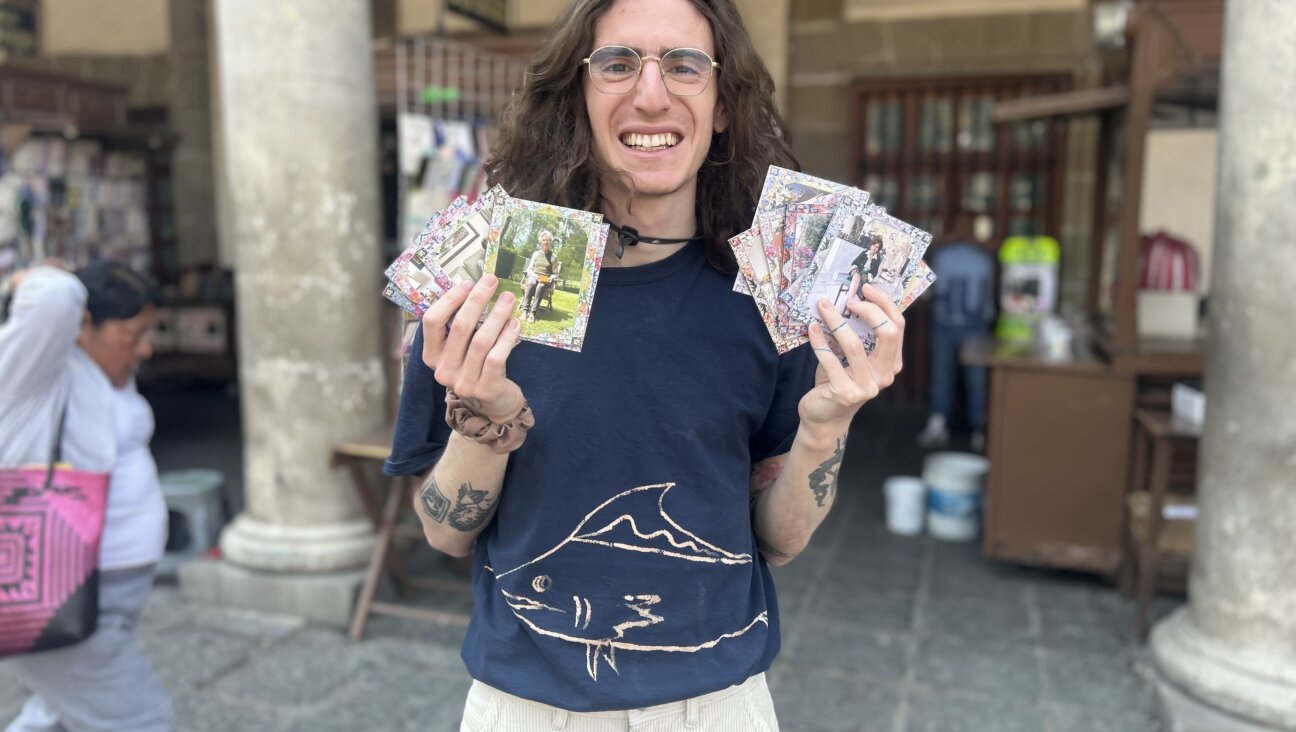On HBO, basketball star Amar’e Stoudemire’s journey to Orthodox Judaism

Amar’e Stoudamire By Getty Images
When basketball star Amar’e Stoudemire was a child, his mother told him that they were from “the lost tribes of Israel.” While her reference was to a Hebrew Israelite group, her words planted the seed that would lead him to Orthodox Judaism.
Stoudemire’s decade-long journey from a six-time all-star forward in the NBA to his devout religious life is featured in “Amar’e Stoudemire” on HBO’s Real Sports with Bryant Gumbel Tuesday at 10 p.m. EST.
The idea of belonging and stability was especially important to Stoudemire during his teens, when he attended seven high schools in 18 months. The 6’10” youth released stress through basketball and was so skilled that the Phoenix Suns drafted him straight out of high school. He later played for the New York Knicks.

Following His Mother’s Words: When Stoudemire was growing up, his mother told him that they were from “the lost tribes of Israel. Courtesy of HBO
Even as his sports career made him rich and famous, he felt a void. He traveled to Israel, toured the holy sites and after retiring from the NBA, moved there to play for the Hapoel Jerusalem Basketball Club, leading them to a championship that eluded him in the NBA.
“It felt like home,” he says in the program, with no sense of being an outsider. Led by his mother’s words to research his ancestry and Judaism, he studied in a yeshiva and completed his conversion in the Holy Land.
The “Real Sports” segment explores Stoudemire’s religious beliefs and the duality of what he describes as his “moderate Orthodox life” in Brooklyn, where he is on the coaching staff of the NBA’s Nets. He talks candidly about how his journey has transformed him and given new dimension to his mother’s words from long ago.
“I’m for sure a different person than I was before,” he said.
TaRessa Stovall is an author and journalist who frequently describes herself as Blewish. She writes about the intersections of culture and identity.
The Forward is free to read, but it isn’t free to produce

I hope you appreciated this article. Before you go, I’d like to ask you to please support the Forward.
Now more than ever, American Jews need independent news they can trust, with reporting driven by truth, not ideology. We serve you, not any ideological agenda.
At a time when other newsrooms are closing or cutting back, the Forward has removed its paywall and invested additional resources to report on the ground from Israel and around the U.S. on the impact of the war, rising antisemitism and polarized discourse.
This is a great time to support independent Jewish journalism you rely on. Make a gift today!
— Rachel Fishman Feddersen, Publisher and CEO
Support our mission to tell the Jewish story fully and fairly.
Most Popular
- 1

Fast Forward Ye debuts ‘Heil Hitler’ music video that includes a sample of a Hitler speech
- 2

Opinion It looks like Israel totally underestimated Trump
- 3

Culture Cardinals are Catholic, not Jewish — so why do they all wear yarmulkes?
- 4

Fast Forward Student suspended for ‘F— the Jews’ video defends himself on antisemitic podcast
In Case You Missed It
-

Culture How one Jewish woman fought the Nazis — and helped found a new Italian republic
-

Opinion It looks like Israel totally underestimated Trump
-

Fast Forward Betar ‘almost exclusively triggered’ former student’s detention, judge says
-

Fast Forward ‘Honey, he’s had enough of you’: Trump’s Middle East moves increasingly appear to sideline Israel
-
Shop the Forward Store
100% of profits support our journalism
Republish This Story
Please read before republishing
We’re happy to make this story available to republish for free, unless it originated with JTA, Haaretz or another publication (as indicated on the article) and as long as you follow our guidelines.
You must comply with the following:
- Credit the Forward
- Retain our pixel
- Preserve our canonical link in Google search
- Add a noindex tag in Google search
See our full guidelines for more information, and this guide for detail about canonical URLs.
To republish, copy the HTML by clicking on the yellow button to the right; it includes our tracking pixel, all paragraph styles and hyperlinks, the author byline and credit to the Forward. It does not include images; to avoid copyright violations, you must add them manually, following our guidelines. Please email us at [email protected], subject line “republish,” with any questions or to let us know what stories you’re picking up.















